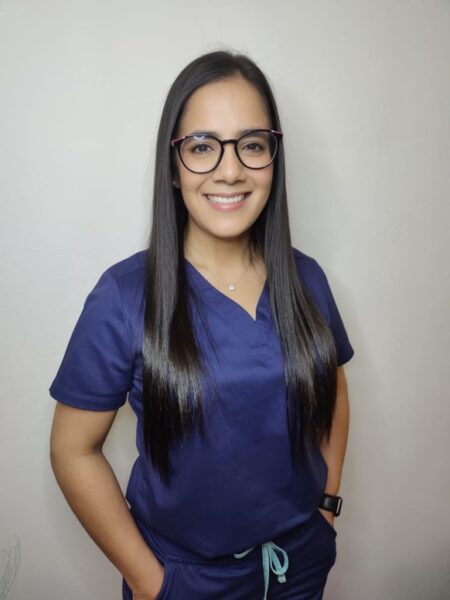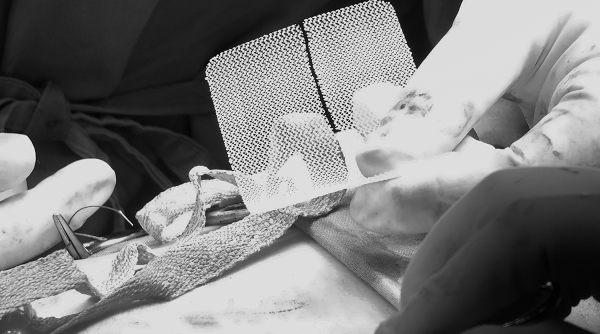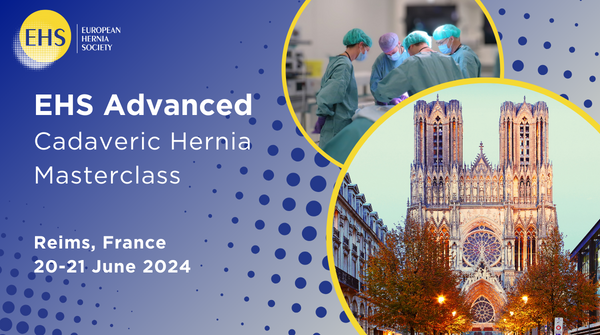In November, it was time for the EHS intermediate cadaveric course in Amsterdam. The course was highly appreciated by the attending trainees and here comes some thoughts from two of the participants. If you find it interesting, don’t hesitate to apply for the upcoming EHS courses! Visit the EHS website to find more information about future courses.
First Interview
Name: Nelly Hernández
Country: Honduras, Central America
Position: General Surgeon, Military Hospital Honduras
1 – Reflecting on your experience, what valuable insights or skills did you gain from participating in the EHS cadaver course?
Participating in the EHS cadaver course was a game-changer for me when it comes to hernia repair. The course gave me a deep dive into the anatomy of the abdominal wall, making it crystal clear how intricate it is. This newfound understanding has really boosted my grasp of the different hernia repair techniques.
The best part was getting hands-on with cadaveric dissection. It was like connecting the dots between what I read in books and actually doing it for real. Trying out both open and laparoscopic techniques wasn’t just a skills upgrade; it gave me this confidence boost in handling the basics of hernia surgeries. I’m pretty sure these experiences will step up the game in how precise and effective I can be in treating hernias, ultimately benefiting the quality of patient care in my professional practice.
2 – Before attending the course, what were your expectations? Did the experience align with or surpass those expectations? How?
Before attending the hernia course, my primary expectations centered around improving my ability in various hernia repair techniques, integrating international hernia guidelines into my daily practice, catch up on the latest hernia surgery updates, and just generally improve my surgery skills. The ultimate goal was to elevate the quality of care I provide to my patients dealing with hernias. The experience not only aligned with, but significantly surpassed my initial expectations. The course served as an invaluable platform providing me with exceptional insights and hands-on learning opportunities. Interacting with esteemed surgeons, who are recognized globally as authorities in the field, allowed me to learn tips and tricks that I could immediately integrating into my surgical repertoire. But what mad e this course stand out was the chance to dive into actual situations during the hands-on sessions. It wasn’t just about talking; it was about doing, practicing and getting personal feedback from such experienced surgeons. The Q&A sessions were golden too. Being able to throw my questions out there and get answers from top-tier surgeons was like having a direct line to expert advice. It made the tricky parts clearer and definitely made me sharper when it comes to making decisions in hernia cases. Overall, it was way more than I expected, and I’m feeling very enthusiastic to bring these new skills and insights into my everyday work.
3 – Thinking about your clinical practice, are there specific learnings or techniques from the course that you’re excited to implement or integrate? How do you envision applying them?
I am excited about integrating the surgical techniques and knowledge gained from the hernia course into my clinical practice, focusing particularly on laparoscopic techniques. As minimally invasive approaches gain popularity in my country, the insights from the course are crucial for my professional growth. The acquired skills in laparoscopic techniques are expected to significantly improve my proficiency in minimally invasive hernia repairs, aligning well with the changing surgical practices. This not only promises to reduce recovery times and patient discomfort but also contributes to overall improved outcomes. I am enthusiastic about implementing these details, from patient positioning to precise instrument handling, in my day-to-day hernia surgery, aiming for both efficiency and excellence in my work.
4 – In the spirit of unexpected discoveries, can you share any surprising or enlightening moments from the course—something you didn’t anticipate learning but found especially valuable?
The final day of the hernia course unveiled an unexpectedly enlightening experience that significantly enriched my learning beyond the anticipated curriculum. The hands-on dissection of the abdominal wall proved to be a pivotal and transformative session. Delving into the intricacies of muscles, compartments, nerves, and layers provided not only a comprehensive understanding of abdominal wall anatomy but also a practical application of this knowledge. This unexpected opportunity has undoubtedly elevated my surgical comprehension and skill set, offering a depth of insight that extends well beyond my initial expectations.
One specific revelation that stood out was the lecture on abdominal wall closure. The emphasis placed on the “small bites” technique, the nuanced selection of suture materials for abdominal wall closure, and the meticulous details involved in achieving an optimal closure were unexpected gems in the course content. This newfound knowledge has refined my approach to abdominal wall closure, highlighting the importance of precision and technique in ensuring optimal postoperative outcomes. It was a revelation that I didn’t foresee but one that I now consider indispensable to my surgical practice.
Beyond the academic highlights, the informal dinner gathering proved to be another unexpected source of enrichment. Engaging with classmates and esteemed teachers in a relaxed setting fostered a vibrant exchange of ideas, experiences, and cultural perspectives. This cultural interchange not only enhanced my understanding of the diverse facets of the surgical community but also forged strong professional and personal bonds. The connections established during this dinner are not ephemeral; rather, they have become an integral part of my professional network and have left an enduring impact on my sense of belonging within the broader surgical community

Second Interview
Name: Dr. Philipp Madundo Chihungi
Country: Austria
Affiliation: Krankenhaus der Barmherzigen Schwestern Wien
Position: surgeon in training
1 – Reflecting on your experience, what valuable insights or skills did you gain from participating in the EHS cadaver course?
I aquired first time practice for some techniques which are not used at our Department (TEP, Shouldice). All around I learned many details to improve my future surgeries which can make a relevant difference.
2 – Before attending the course, what were your expectations? Did the experience align with or surpass those expectations? How?
I had high expectations which were met. Also I was surprised about the forthcoming and generous senior colleagues I got a chance to meet. They gave me a lot of time to practice and had great input. The same can be said about the many present faculty members.
3 – Thinking about your clinical practice, are there specific learnings or techniques from the course that you’re excited to implement or integrate? How do you envision applying the
The different knoting styles were interesting and I am looking forward to using them during closure. To have the Shouldice technique as an option is also a nice addition for me.
4 – In the spirit of unexpected discoveries, can you share any surprising or enlightening moments from the course—something you didn’t anticipate learning but found especially valuable?
It was great to have that much time for the dissection of the abdominal wall. I got a lot of input for practical application and I appreciated that.


